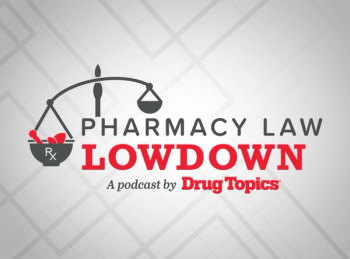
Potential Drug-Diversion Cases Frequently Go Uninvestigated
Although one in 12 controlled substances medication transactions at US hospitals involve suspicious variations, only about half of such transactions are ever investigated.
About 8% of controlled substance (CS) medication transactions in US hospitals have suspicious characteristics that may be indicative of drug diversion, according to a newly published report.
The data are based on prescription transactions at more than 230 hospitals that use Bluesight for Controlled Substances, a diversion-detection platform that audits controlled substances from the wholesaler to patient care areas and flags discrepancies such as differences between the number of pills prescribed and the number of pills administered. The data were published in the
Douglas J. Zurawski, Pharm.D., the senior vice president of strategic accounts at Kit Check, said the report shows that drug diversion remains an important issue for US hospitals.
“As gatekeepers of the controlled substances over which we have control, we must be as diligent as we can be to ensure a strong controlled substances system within our hospitals,” he told Managed Healthcare Executive®.
The 8% of transactions flagged in the report translates to about 4 million individual transactions. One good sign is that the trend of potential diversion seems to be headed in a positive direction. From the first quarter of 2020 through the fourth quarter of 2021, the rate of discrepancies dropped from 12% to 8%.
The details of those discrepancies track with broader issues of substance abuse in the US. Since September 2018, Fentanyl accounted for 22% of the cases flagged for variances, Kit Check said. Midazolam was the second-most common drug involved in variances, representing 13% of cases over the same timeframe. Hydromorphone and morphine were each involved in 10% of cases.
The most common staff members involved in diversion cases were nurses, with 84% of variances involving nurses, with anesthesiologists and nurse anesthesiologists following distantly in second and third place. The prominence of nurses in the flagged transactions is likely a result of their central role in handling and administering medication, the report said.
Though the report suggests drug diversion remains a major problem in US hospitals, nearly half of the cases flagged go uninvestigated, Kit Check said. Forty-six percent of discrepancy cases were reviewed and closed, meaning drug diversion was ruled out. Another 9% were investigated and could not be reconciled, suggesting drug diversion may have been involved. The remaining 45% of cases remain open and were not reviewed by hospital officials.
Zurawski said there are many potential reasons that so many cases are not investigated.
“The primary reason is usually a lack of time, combined with a lack of priority,” he said. “This priority needs to be set at the senior executive level to provide the level of urgency around variances. It really does come from the top down, and across all departments in the hospital.”
There is some evidence that drug diversion is becoming a higher priority. Kit Check said the number of variance investigations has doubled since the first quarter of 2020. Of the Bluesight cases, representing 230 hospitals, 131 cases were confirmed to be drug-diversion incidents.
Newsletter
Pharmacy practice is always changing. Stay ahead of the curve with the Drug Topics newsletter and get the latest drug information, industry trends, and patient care tips.




































































































































